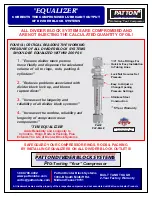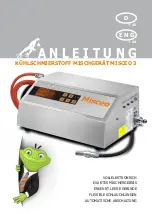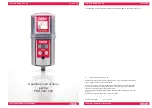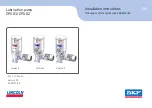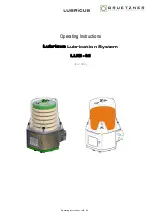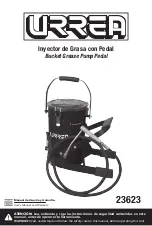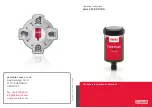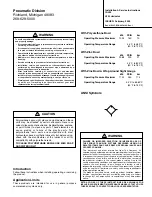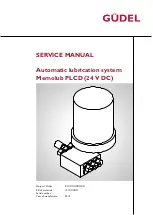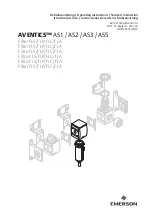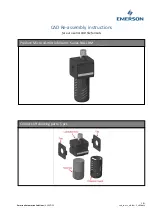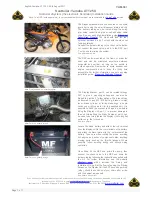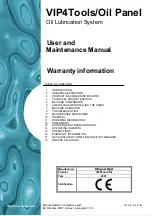
Equalizing The Working Pressure of All Divider Block Outlets Ensures
Cylinders, Rings, Rods & Packing Are Receiving The Calculated Volume of Oil
NOTICE:
The
EQUALIZER
should be manually adjusted to preset pressure before installation on the
divider block system. Locate any convenient section of tubing between the outlet of the divider block and the
injection check valve, remove approx 3" of tubing and install the
EQUALIZER
.
1)
With the compressor operating at max RPM and discharge pressure,
note the maximum pressure reading on the pressure
gauge installed on the discharge of the lubricator pump or inlet of the divider block.
(see fig 1)
2)
Loosen lock nut with a 5/8" open end wrench and slowly rotate clockwise to increase pressure while monitoring the pressure
gauge on the divider block or lube pump.
Note:
If needed a pressure gauge may be temporarily placed in the tubing line to simplify
making minor adjustments to the opening pressure on the
EQUALIZER
.
(see fig 3)
3)
Slowly increase pressure by rotating the adjusting nut on the
EQUALIZER
clockwise until you notice the pressure increasing
on the divider block system gauge.
(see fig 4)
4)
Continue monitoring the pressure gauge at the discharge of the lube pump (or inlet of the divider block) and slowly rotate the
adjusting nut clockwise until the pressure gauge begins to read approximately 300 PSI over the initial system pressure.
5)
After installing and adjusting the
EQUALIZER
, the gauge should display pressure 300 PSI over the highest peak pressure of
the system BEFORE the
EQUALIZER
was adjusted. To secure the pressure setting, use an open end 5/8" wrench as backup
and tighten the lock nut against the adjusting nut.
(see fig 3 & 4)
6)
Continue installing and adjusting
EQUALIZERS
on all outlets of the divider block until the pressure gauge holds consistent
pressure with no more than 200 PSI rise and fall.
As you install and adjust the other
EQUALIZERS
, the goal is never to
NOTE:
increase the pressure reading on the gauge at the pump or divider block after adjusting the first
EQUALIZER
.
7)
After adjusting all
EQUALIZERS
, the indicator needle on the pressure gauge at the lubricator pump or divider block should
fluctuate very little with fluid movement and no erratic pressure changes over 200 psi.
8)
If the pressure gauge at the pump rises and falls erratically over 200 psi, re-adjust each
EQUALIZER
until the pressure gauge
shows less than 200 PSI differential with fluid movement.
NOTE:
After you've set all
EQUALIZERS
to the desired opening pressure, spread Cross Check Torque Seal over the adjusting
nut and lock nut
. If the torque seal is broken it's obvious someone has tampered with the set pressure.
(see fig 2 & 3)
ADJUSTING NUT
on
"EQUALIZER"
Rotate to Increase
or Decrease Pressure
PATTON
DIVIDER BLOCK SYSTEMS
12 T
15 T
06 T
(fig 4)
LOCK NUT
(fig 3)
Pressure Gauge
Discharge Of Pump
or Inlet of Divider Block
(fig 1)
1st Stage Cyl.
@ 300 PSI
2nd Stage Cyl.
@ 800 PSI
2nd Stage Pkg.
@ 400 PSI
1st Stage Cyl.
@ 300 PSI
1st Stage Pkg.
@ 200 PSI
2nd Stage Cyl.
@ 800 PSI
500
0
1000
1500
2000
2500
3000
3500
4000
II
I II
I
I
I
I
I
I
I
I
II
II
I
I
I
I
I
I
I
I
II
I I I
L U B R I C A T O R P R O D U C T S
PATTON
DIVIDER BLOCK SYSTEMS
(fig 2)
INLET
(fig 5)
OUTLET
Minor Adjustment Of The
"EQUALIZER"
After Installation In The Tubing Line of The Divider Block System
EQUALIZER
500
0
1000
1500
2000
2500
3000
3500
4000
II
I II
I
I
I
I
I
I
I
I
II
II
I
I
I
I
I
I
I
I
II
I I I
L U B R I C A T O R P R O D U C T S

